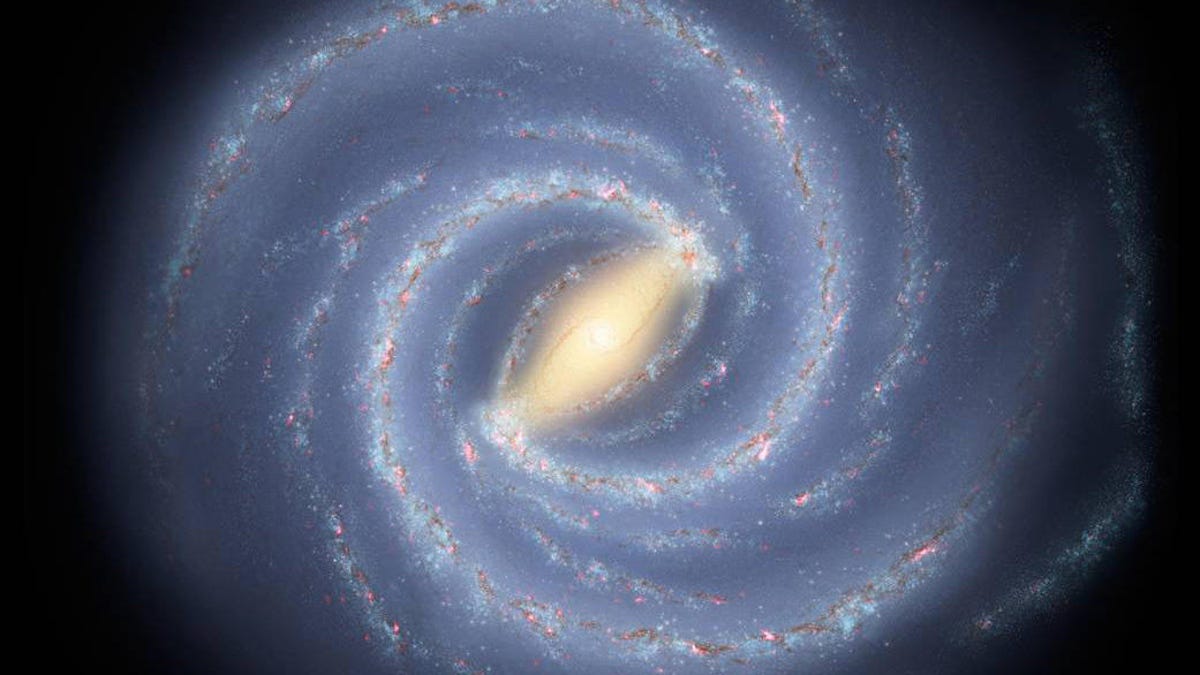Bright star pulses reveal when Milky Way devoured another galaxy
New measurements suggest the Milky Way gobbled up Gaia-Enceladus when it was just a fledgling baby galaxy.

This artist's concept illustrates a view of the Milky Way using infrared images from NASA's Spitzer Space Telescope.
The Milky Way, our stunning home galaxy, is like a cosmic Hannibal Lecter, having gobbled up smaller galaxies as it evolved. In July last year, scientists dated one such period of galactic cannibalism as having occurred around 10 billion years ago, when the Milky Way ate the dwarf galaxy known as Gaia-Enceladus. However, an exact date for the massive collision has remained hard to pin down.
New research, published in the journal Nature Astronomy on Jan. 13, using data obtained from NASA's Transiting Exoplanet Survey Satellite (TESS), the European Space Agency's Gaia satellite and a handful of ground-based telescopes, has helped astronomers refine the date of the cannibalism once more. The international collaboration of over 80 scientists studied a single, very bright star approximately 95 light-years from Earth known as "ν Indi," which can be seen with the naked eye.
Using asteroseismology, a way to study how stars pulse and oscillate, the team were able to determine the age of v Indi and revealed that it's had a long life -- it's approximately 11 billion years old, meaning it was likely born in the early years of the Milky Way's life. In addition, v Indi comes from a region of space that appears to have been affected when Gaia-Enceladus was swallowed up by the Milky Way.
That information allowed the researchers to more accurately date this huge collision of galaxies.
"Since the motion of ν Indi was affected by the Gaia-Enceladus collision, the collision must have happened once the star had formed," said Bill Chaplin, astrophysicist at the University of Birmingham and lead author, in a press release. "That is how we have been able to use the asteroseismically-determined age to place new limits on when the Gaia-Enceladus event occurred."
The team suggest v Indi must have been in place before the Milky Way ate up Gaia-Enceladus and used its age and mass measurements to hypothesize the galactic cannibalism must have begun somewhere between 11.6 and 13.2 billion years ago. However, the researchers note the new age relies on some assumptions being made about Gaia-Enceladus and its collision.
The ancient history of our home galaxy is an area of intense research and astronomers are trying to piece together how the Milky Way came to be in the warped and twisted spiral shape we see today. Piecing together its formation and how galactic mergers may have contributed will help us better understand just how galaxies come to be -- and the implications that might have for life and the universe, as a whole.
Originally published 3:05 a.m. PT

